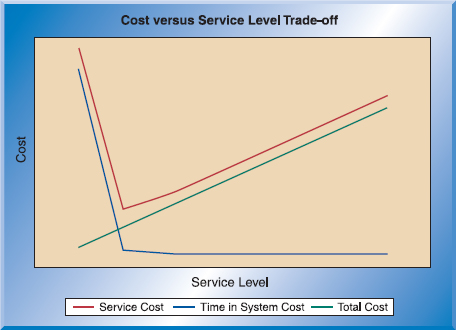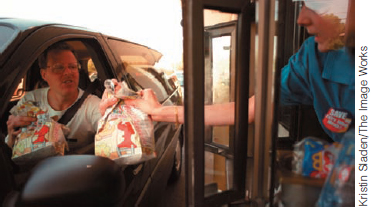ELEMENTS OF WAITING LINES
Any time there is more customer demand for a service than can be provided, a waiting line occurs. Customers can be either humans or inanimate objects. Examples of objects that must wait in lines include a machine waiting for repair, a customer order waiting to be processed, subassemblies in a manufacturing plant (that is, work-in-process inventory), electronic messages on the Internet, and ships or railcars waiting for unloading.
In a waiting line system, managers must decide what level of service to offer. A low level of service may be inexpensive, at least in the short run, but may incur high costs of customer dissatisfaction, such as lost future business and actual processing costs of complaints. A high level of service will cost more to provide and will result in lower dissatisfaction costs. Because of this trade-off, management must consider what is the optimal level of service to provide. This is illustrated in Figure C-1.
FIGURE C-1 Waiting cost and service level trade-off

LINKS TO PRACTICE Waiting for Fast Food

Fast-food restaurants illustrate the transient nature of waiting line systems. Waiting lines occur at a fast-food restaurant drive-through during peak meal times each day. There is a temporary surge in demand that cannot be quickly handled ...
Get Operations Management: An Integrated Approach, 5th Edition now with the O’Reilly learning platform.
O’Reilly members experience books, live events, courses curated by job role, and more from O’Reilly and nearly 200 top publishers.

